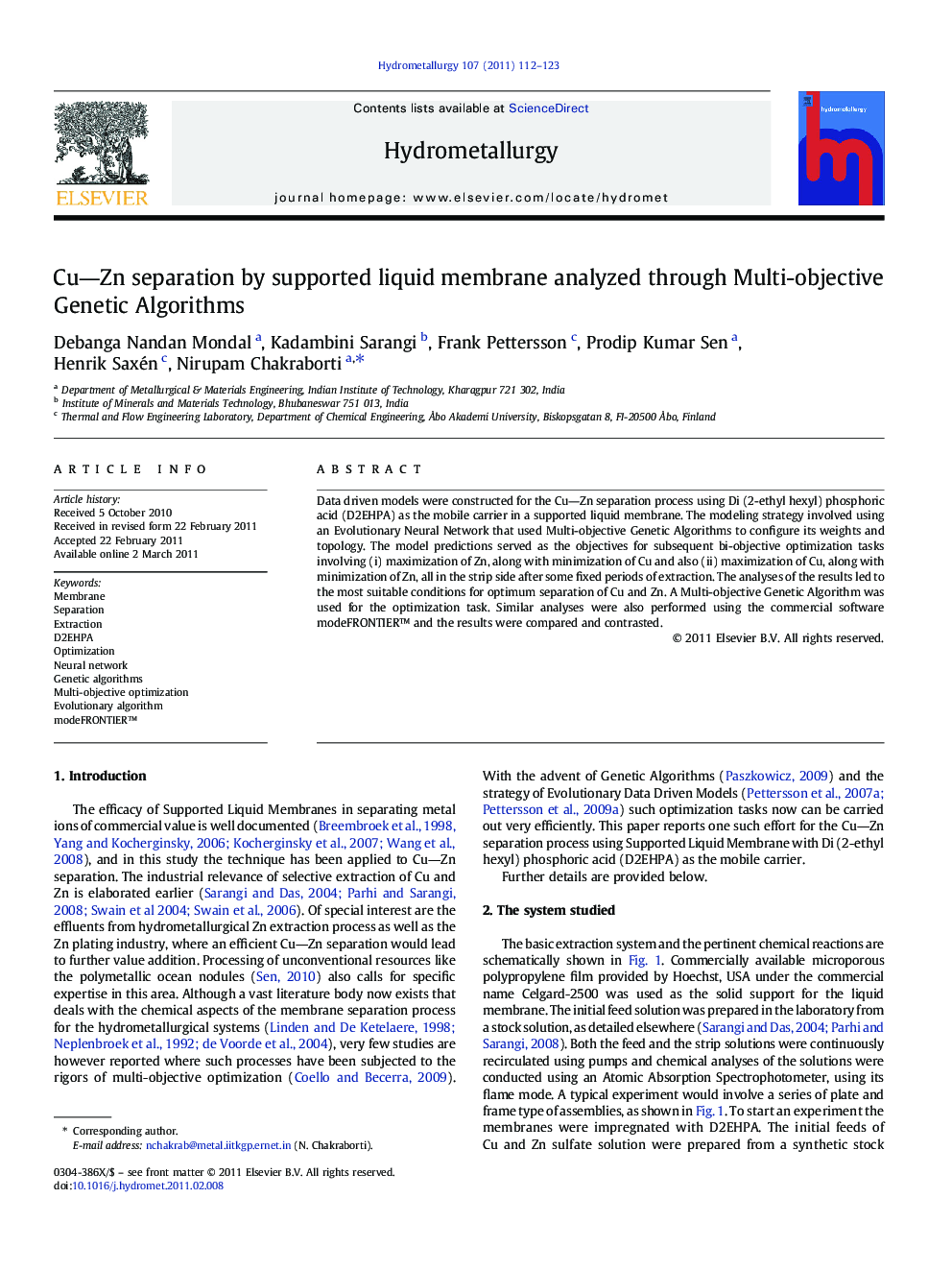| Article ID | Journal | Published Year | Pages | File Type |
|---|---|---|---|---|
| 212745 | Hydrometallurgy | 2011 | 12 Pages |
Data driven models were constructed for the Cu―Zn separation process using Di (2-ethyl hexyl) phosphoric acid (D2EHPA) as the mobile carrier in a supported liquid membrane. The modeling strategy involved using an Evolutionary Neural Network that used Multi-objective Genetic Algorithms to configure its weights and topology. The model predictions served as the objectives for subsequent bi-objective optimization tasks involving (i) maximization of Zn, along with minimization of Cu and also (ii) maximization of Cu, along with minimization of Zn, all in the strip side after some fixed periods of extraction. The analyses of the results led to the most suitable conditions for optimum separation of Cu and Zn. A Multi-objective Genetic Algorithm was used for the optimization task. Similar analyses were also performed using the commercial software modeFRONTIER™ and the results were compared and contrasted.
Research Highlights► A novel technique for optimizing experimental data. ► Results presented for supported liquid membrane separation of Cu and Zn. ► Data driven model construction using an Evolutionary Neural Network. ► Maximum separation conditions identified by Multi-objective Genetic Algorithms. ► Highly generic technique that is easily extendable to related systems.
